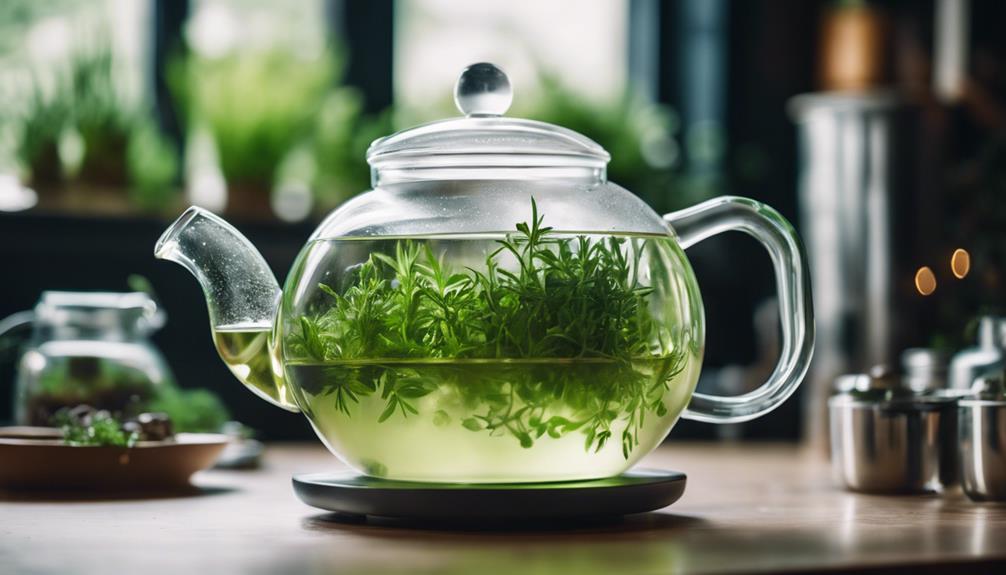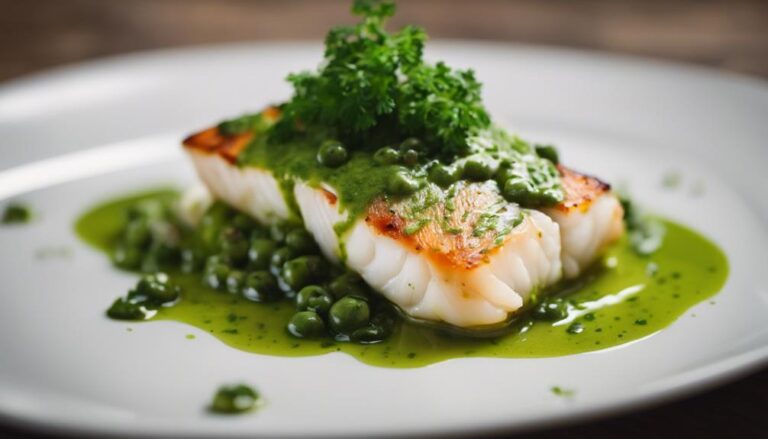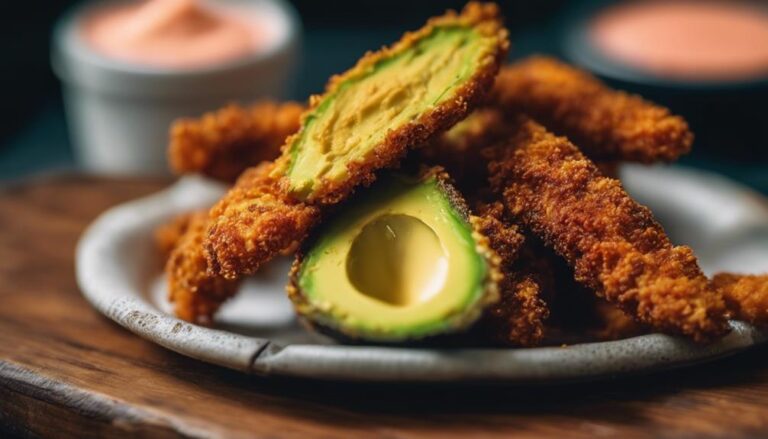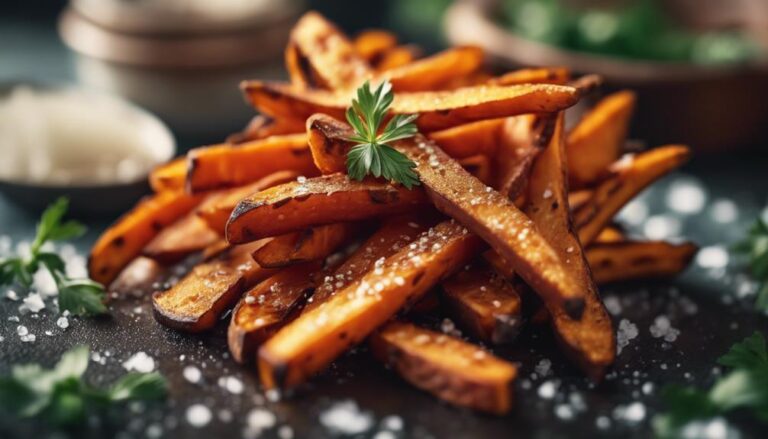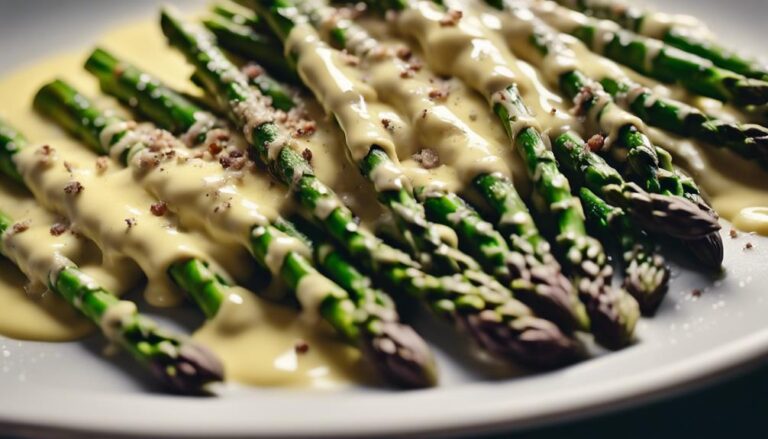Sous Vide Herbal Tea Infusion
Enhance your herbal tea infusion game with sous vide techniques! Sous vide can revolutionize flavor extraction, upping your tea experience. Customizing time and temperature levels adds depth to flavors. Fruits or botanicals introduce complexity, creating unique profiles. Experiment with blends to cater to preferences. Immerse yourself in the world of sous vide for a tea adventure like no other.
What You Will Learn Here
- Benefits of sous vide for precise temperature control in herbal tea infusion.
- Customizable flavor intensity through sous vide time and temperature adjustments.
- Incorporating fruits and botanicals in sous vide for added complexity.
- Experimentation leads to discovering unique flavor profiles in sous vide herbal infusions.
- Crafting innovative tea blends with sous vide to cater to diverse taste preferences.
Tea's Origins
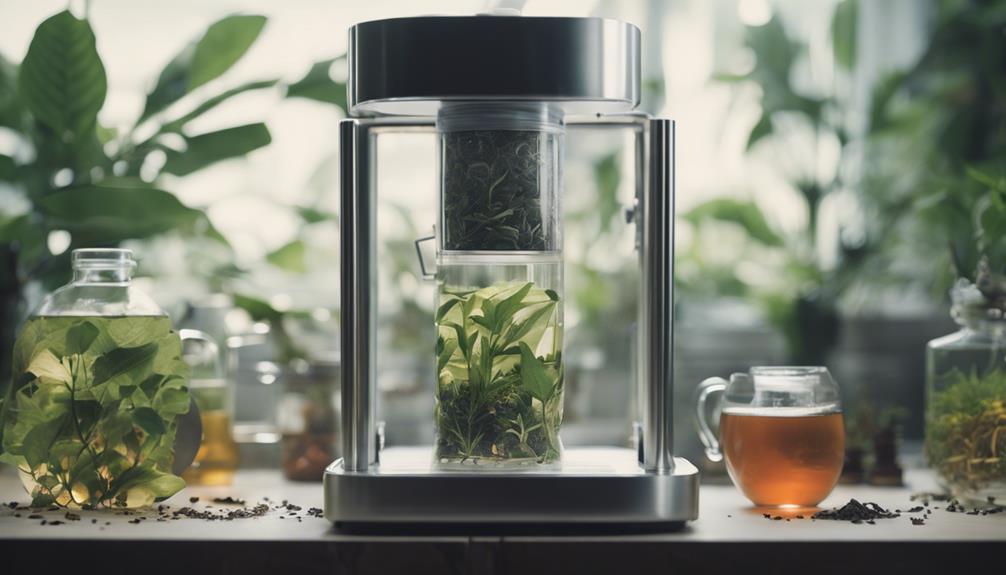
Tea's historical roots trace back thousands of years, with origins in ancient China. Cultural tea traditions have been passed down through generations, shaping the ways in which tea is enjoyed worldwide.
The evolution of tea has seen it grow from a medicinal drink to a beverage appreciated for its diverse flavors and aromas.
Tea's Historical Roots
With origins dating back to ancient China, the history of tea can be traced through various cultural practices and traditions. Tea ceremonies hold significant historical significance, evolving from formal rituals in ancient China to widespread cultural practices worldwide.
The traditional uses of tea extend beyond a simple beverage, with historical records indicating its early medicinal applications. Through the ages, tea has been valued not only for its invigorating taste but also for its health benefits, ranging from antioxidant properties to potential mood-enhancing effects.
As tea spread across different regions and cultures, its historical roots became intertwined with societal customs and beliefs, shaping the way we perceive and enjoy this ancient drink today.
Cultural Tea Traditions
Cultural tea traditions span centuries and encompass a diverse array of practices rooted in various societies and regions. Tea ceremonies hold immense cultural significance in countries like Japan and China, where the art of preparing and serving tea is considered a form of meditation and respect. These ceremonies often follow strict rituals that have been passed down through generations.
Additionally, herbal tea remedies have been used for their health benefits in cultures worldwide. From calming chamomile to invigorating ginger, herbal teas are frequently consumed to alleviate ailments and promote overall well-being. Understanding the cultural significance of tea ceremonies and the health benefits of herbal tea remedies sheds light on the rich tapestry of traditions woven around this beloved beverage.
Evolution of Tea
The origins of tea can be traced back to ancient times when its consumption was intertwined with various cultural practices and rituals. From its humble beginnings in China where it was initially used for medicinal purposes, tea has evolved into a globally beloved beverage enjoyed for its diverse flavors and numerous health benefits.
Over the centuries, tea cultivation and preparation methods have undergone a significant evolution, leading to the wide variety of teas available today, each with its unique characteristics and brewing techniques. The benefits of tea consumption have been extensively studied, with research highlighting its antioxidant properties, potential to improve heart health, and aid in weight management.
The evolution of tea continues to unfold, offering new insights into its rich history and promising future.
Tea Leaf Varieties
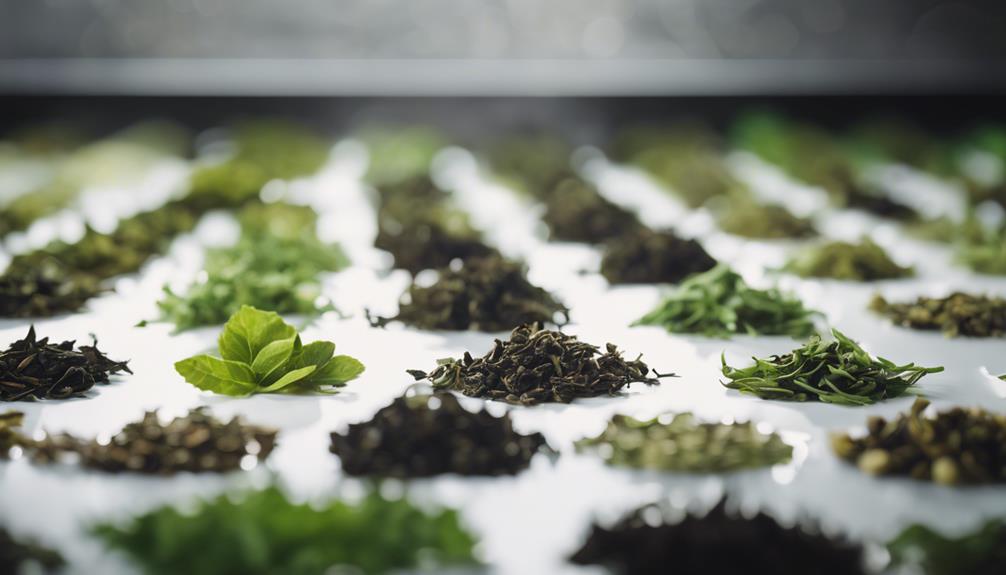
Featuring a wide array of flavors and aromas, tea leaf varieties play a pivotal role in determining the final taste of your herbal infusion. To create a truly unique and delightful tea infusion, it's essential to carefully select the right tea leaves that complement your desired flavors. Here are three key aspects to ponder when choosing tea leaf varieties:
- Tea Leaf Blends: Experiment with different combinations of tea leaf blends to create complex and layered flavors in your herbal infusion. Blending different types of tea leaves such as black, green, white, or herbal teas can result in a harmonious fusion of tastes that cater to your palate.
- Brewing Methods: The brewing method you choose can have a significant impact on the flavor profile of your herbal infusion. Whether you opt for traditional steeping, cold brewing, or the innovative sous vide technique, each method can extract unique qualities from the tea leaves, enhancing the overall experience.
- Origin and Terroir: Contemplate the origin and terroir of the tea leaves as they greatly influence the flavor, aroma, and quality of the infusion. Different regions produce tea leaves with distinct characteristics, offering a diverse range of options to explore and enjoy.
Herbal Tea Infusion Ideas
Discover a rejuvenating Minty Green Tea Blend, a calming Lavender Chamomile Blend, and a zesty Mango Ginger Infusion for your herbal tea infusions.
Each blend offers a unique combination of flavors and aromas that can be enhanced through the sous vide method.
Experimenting with these herbal tea infusion ideas can elevate your tea-drinking experience to new heights.
Minty Green Tea Blend
For an invigorating and aromatic herbal tea infusion, consider blending mint leaves with green tea leaves. Minty Green Tea Blend offers a rejuvenating combination that not only tastes delightful but also provides numerous health benefits.
Here's how to create this delightful infusion:
- Ingredients:
- Fresh mint leaves
- Green tea leaves
- Water
- Preparation:
- Crush the mint leaves slightly to release their aroma.
- Combine the mint leaves and green tea leaves in a sous vide bag.
- Vacuum-seal the bag and sous vide at 160°F (71°C) for 1 hour.
- Serving:
- Strain the infusion to remove leaves before enjoying your minty green tea blend.
Lavender Chamomile Blend
To create a soothing and aromatic herbal tea infusion, consider blending lavender and chamomile for a relaxing and fragrant experience. This combination offers a delicate balance of floral notes and calming properties, making it a perfect choice for unwinding after a long day.
Here are three ways to enjoy this lavender chamomile blend:
- Soothing Blend: The floral undertones of lavender complement the gentle sweetness of chamomile, creating a harmonious and soothing cup of tea.
- Relaxation Aid: Both lavender and chamomile are known for their relaxation-inducing properties, making this blend an ideal choice for winding down before bedtime.
- Aromatic Beverage: The infusion of lavender and chamomile produces an aromatic beverage that not only delights the senses but also promotes a sense of tranquility.
Mango Ginger Infusion
Consider incorporating the zesty freshness of mango and the warming spice of ginger to create a vibrant and invigorating herbal tea infusion. This tropical fruit and zesty spice blend can elevate your tea experience to new heights.
Here are three steps to make the most of this infusion:
- Preparation: Peel and slice fresh mango and ginger to release their flavors fully.
- Sous Vide Infusion: Place the mango, ginger, and your choice of herbal tea in a sous vide bag. Cook at 160°F (71°C) for 1 hour to infuse the flavors perfectly.
- Finishing Touches: Strain the infusion, pour it into a teapot, and enjoy the delightful combination of tropical sweetness and zesty warmth in every sip.
Brewing Techniques
When brewing herbal tea with the sous vide method, understanding the significance of time and temperature is essential for extracting the desired flavors.
Careful selection of ingredients plays a significant role in achieving the desired infusion profile.
Time and Temperature
For best outcomes when brewing a sous vide herbal tea infusion, make sure the water temperature is set precisely according to the type of tea leaves being used. Temperature control is essential in extracting the desired flavors and benefits from the herbs.
Different teas require specific temperatures for ideal infusion. Green teas, for example, are best brewed at around 175°F to 185°F, while herbal teas with roots and barks may require temperatures closer to boiling point, around 200°F to 212°F.
Infusion time is equally important, as it determines the strength and depth of flavor in your tea. Generally, herbal teas can be infused for 15 to 20 minutes, while green teas should steep for 2 to 3 minutes.
Mastering the balance between temperature and infusion time will elevate the quality of your sous vide herbal tea infusion.
Ingredients Selection
Selecting the appropriate herbs and tea leaves is essential for achieving the desired flavor profile in your sous vide herbal tea infusion. When considering flavor pairings, think about combining complementary ingredients such as mint with lemon balm or chamomile with lavender to create a harmonious blend.
Experiment with different brewing methods to extract maximum flavor; for example, infusing at lower temperatures for a longer time can result in a smoother taste. Not only do herbs and tea leaves contribute to taste, but they also offer various health benefits.
Consider the aroma profiles of each ingredient to create a sensory experience that's both pleasing and beneficial. Remember, the quality of your ingredients directly impacts the final outcome of your sous vide herbal tea infusion.
Infusion Flavor Profiles
To achieve diverse infusion flavor profiles in your sous vide herbal tea, it's essential to master various brewing techniques.
Experiment with different flavor combinations by adjusting the ratio of herbs and spices in your infusion. Infusion techniques such as cold brewing or flash-infusion can yield unique and complex flavors.
Consider the health benefits of each herb when creating your blends to tailor the infusion to your needs. Seasonal pairings can enhance the overall experience by utilizing fresh ingredients that complement the time of year.
By understanding the nuances of infusion techniques and flavor combinations, you can create herbal teas that not only taste great but also provide the desired health benefits.
Explore and innovate to elevate your tea brewing skills.
Final Thoughts
In conclusion, consider experimenting with different types of herbal tea blends to discover unique flavor profiles when preparing a sous vide infusion. Reflect on the benefits of sous vide herbal tea infusion, such as enhanced extraction of flavors and preservation of delicate herbal notes that traditional methods may not achieve. Think about your personal experiences with sous vide infusion and how it has elevated your tea-drinking rituals.
Looking towards future directions, explore combining various herbs and spices to create innovative blends that cater to your taste preferences. Consider adjusting the infusion time and temperature to customize the intensity of flavors based on your desired strength. Additionally, contemplate incorporating fruits or botanicals into your herbal tea infusions for added complexity and depth.
Frequently Asked Questions
Can Sous Vide Herbal Tea Infusion Be Made With Fresh Herbs?
Yes, you can use fresh herbs for sous vide herbal tea infusion. Fresh herbs tend to provide a more vibrant and aromatic flavor profile compared to dried herbs. Experiment with different combinations to find your perfect blend.
What Are the Benefits of Using a Vacuum-Sealed Bag for Infusion?
To enhance tea flavor and efficiency in infusion techniques, utilizing a vacuum-sealed bag offers benefits like improved retention of aromas, prevention of oxidation, and compact storage. This method optimizes freshness and intensifies herbal infusion.
How Can I Adjust the Strength of the Herbal Tea Infusion?
To adjust the strength of your herbal tea infusion, vary the brewing time and temperature control. Longer brewing extracts more flavor while higher temperatures can intensify it. Experiment with these variables to find your perfect balance.
Are There Any Specific Herbs to Avoid When Infusing Tea Sous Vide?
When infusing tea sous vide, it's important to prioritize herbal tea safety. Make sure you avoid herbs that may have adverse effects when heated or exposed for a long time. Research infusion techniques and consult reliable sources for guidance.
Can Sous Vide Herbal Tea Infusion Be Stored for Later Use?
You can store sous vide herbal tea infusion for long term use by freezing it as a tea concentrate. This method helps preserve flavors. To reheat, simply thaw and dilute with hot water. Enjoy the convenience of having flavorful tea on hand anytime.
Conclusion
To sum up, sous vide herbal tea infusion offers a precise and controlled method for extracting the flavors and benefits of various tea leaves and herbs. By using this technique, you can experiment with different combinations and brewing times to create unique and flavorful beverages.
Whether you prefer a calming chamomile blend or an invigorating mint infusion, sous vide allows you to customize your tea experience to suit your tastes and preferences. Try it out and elevate your tea game today.
